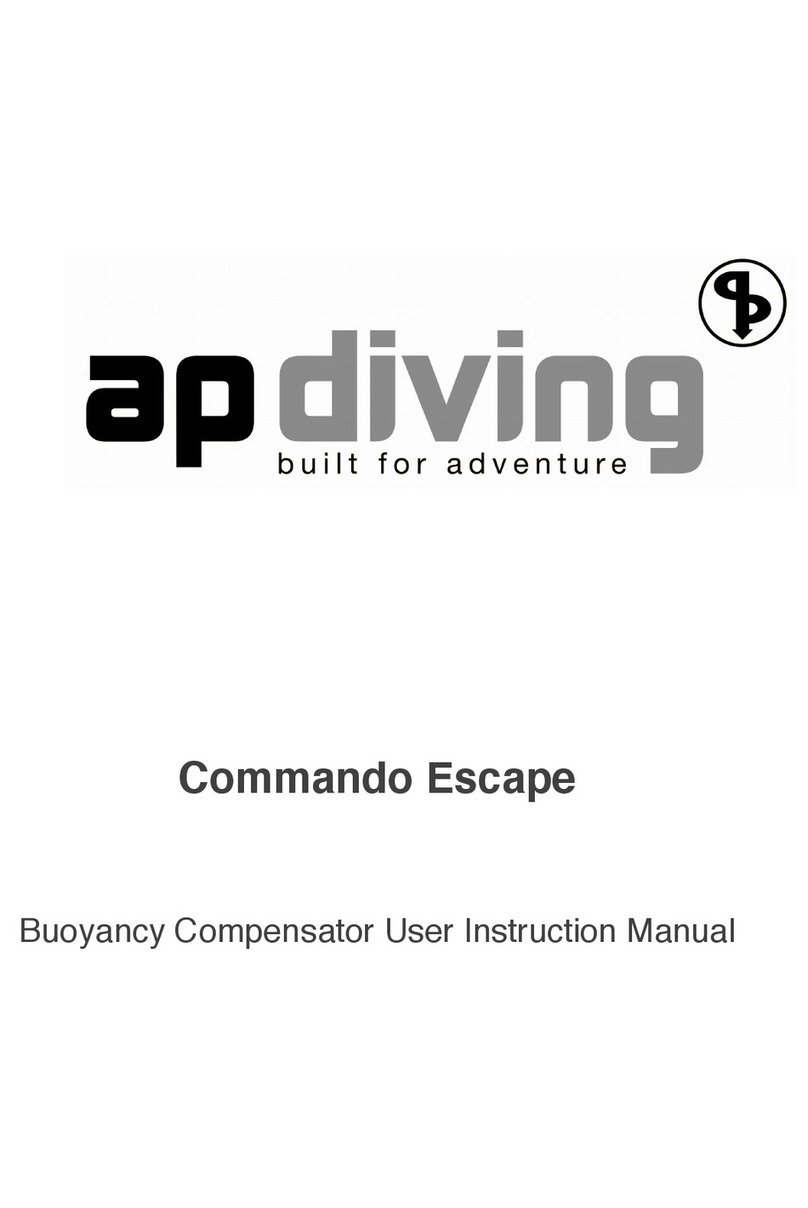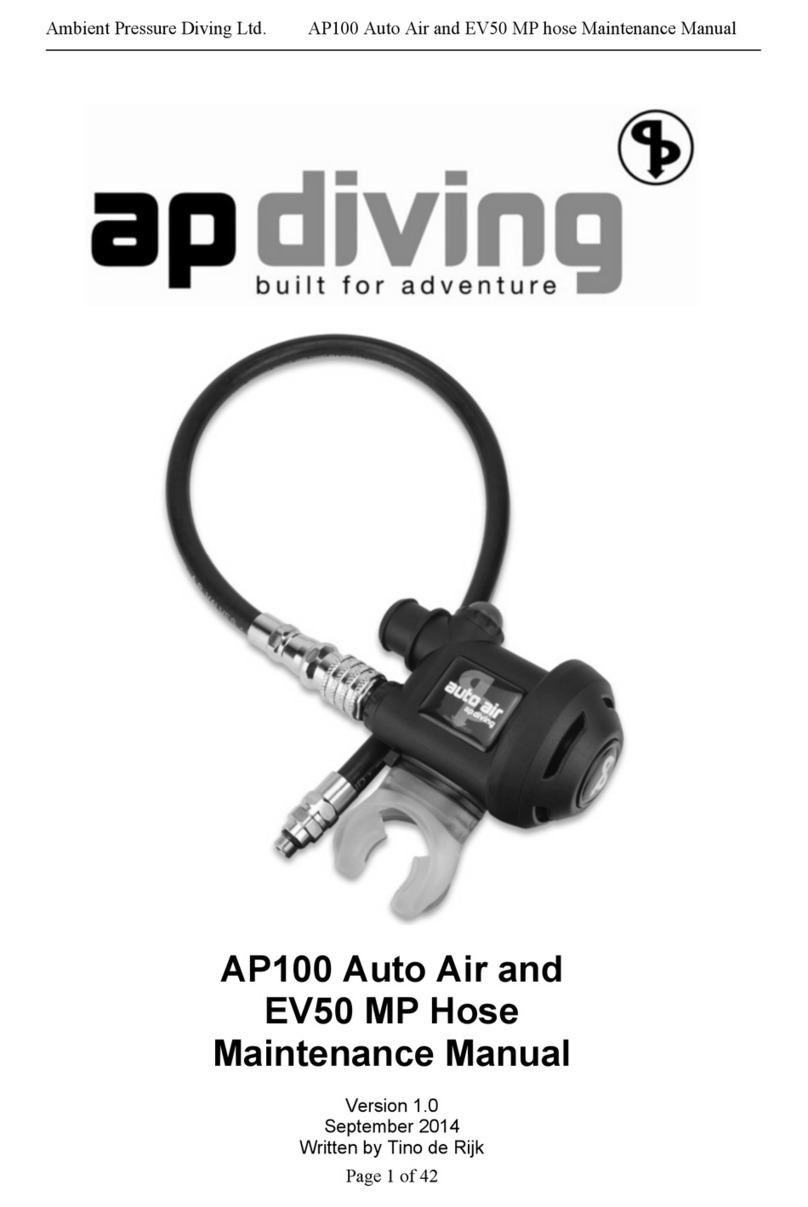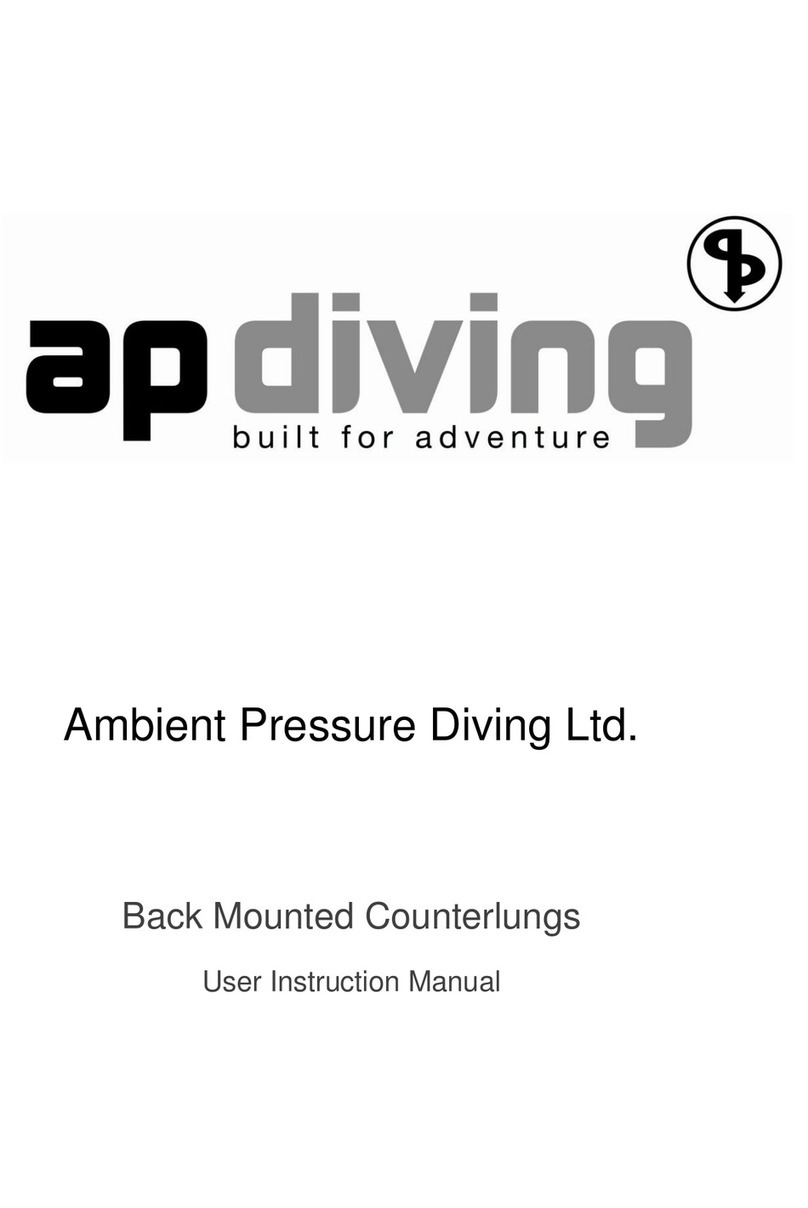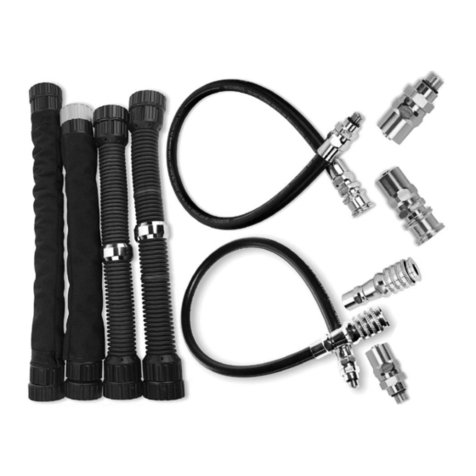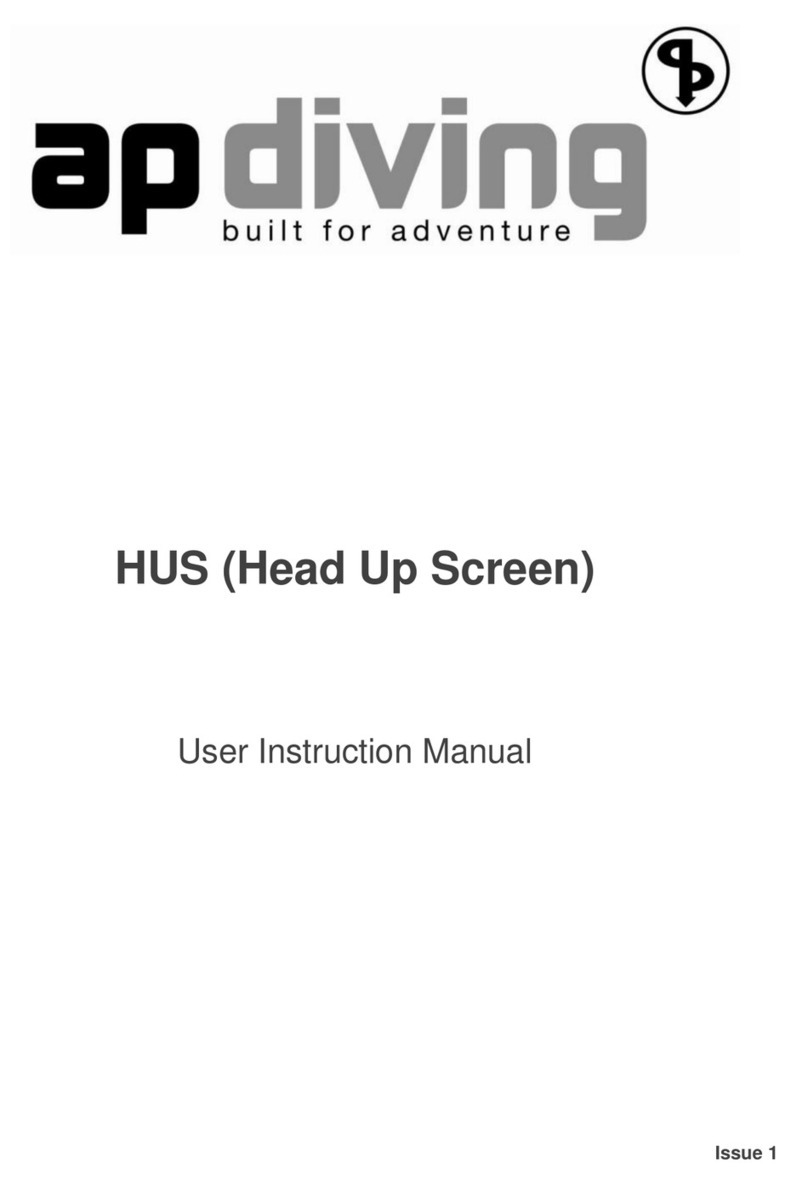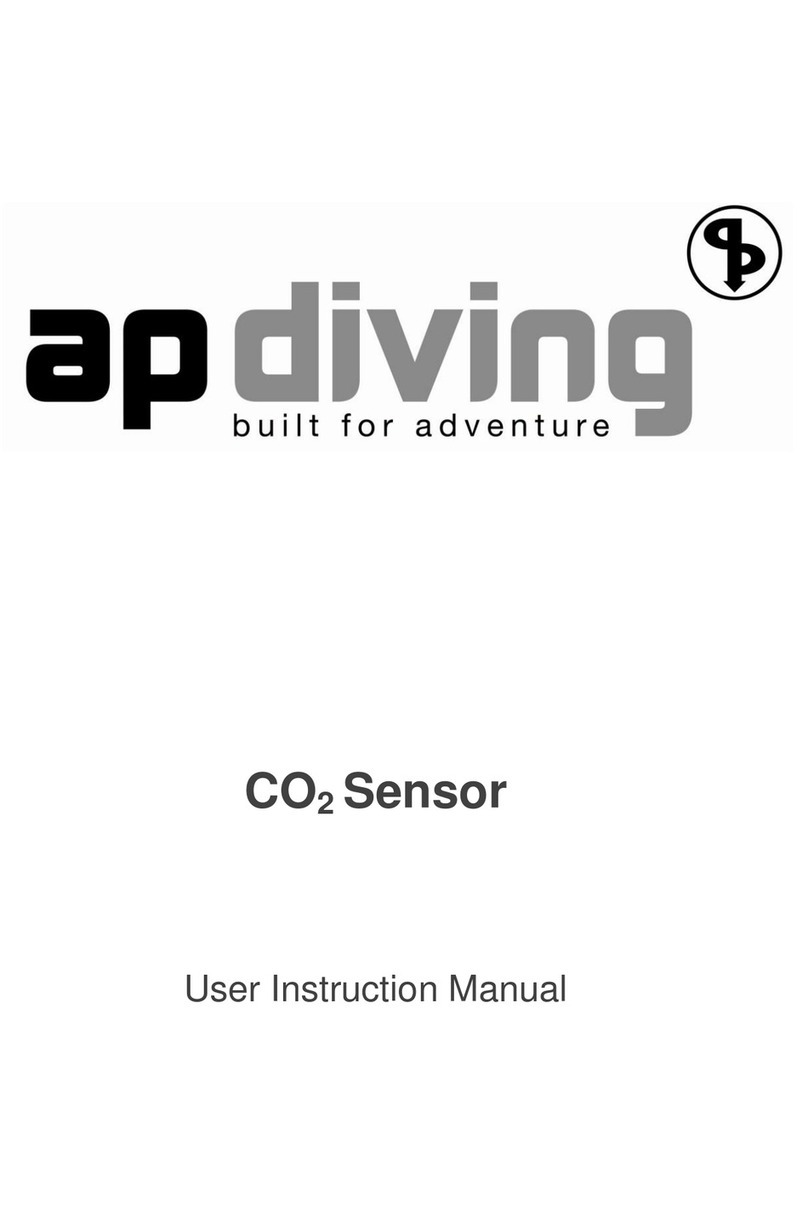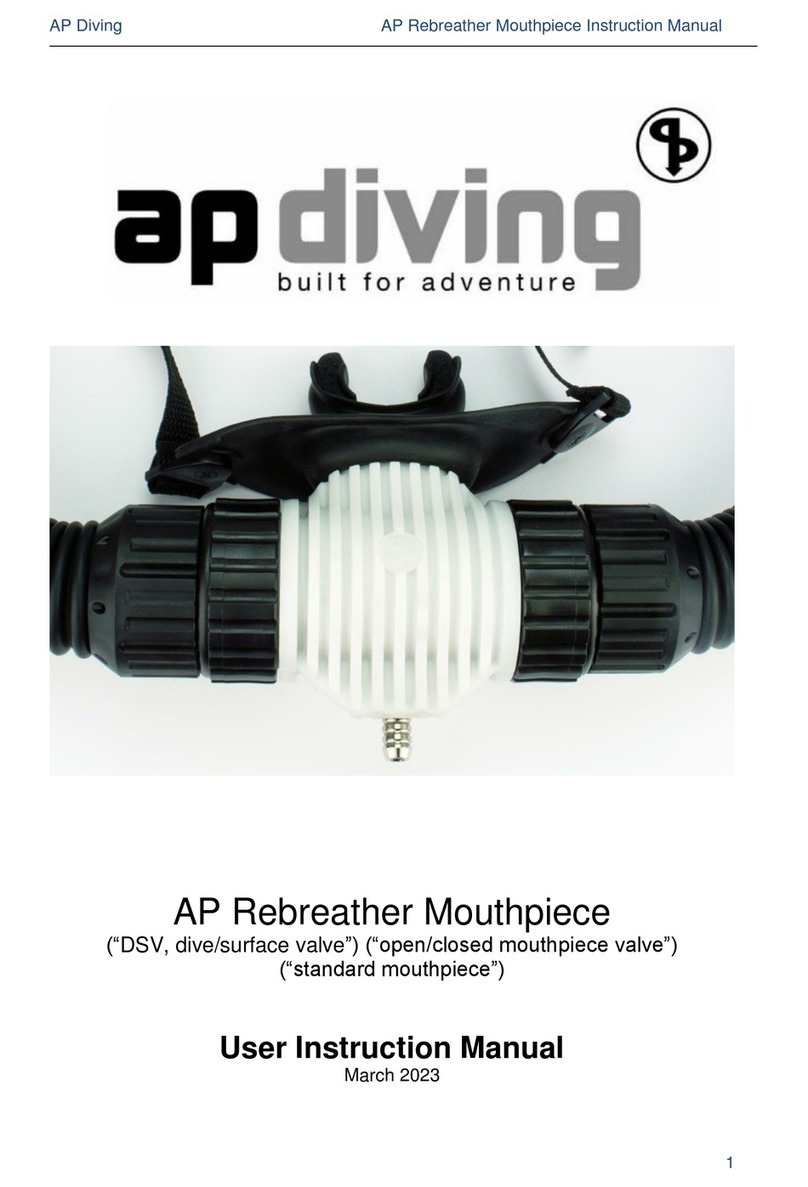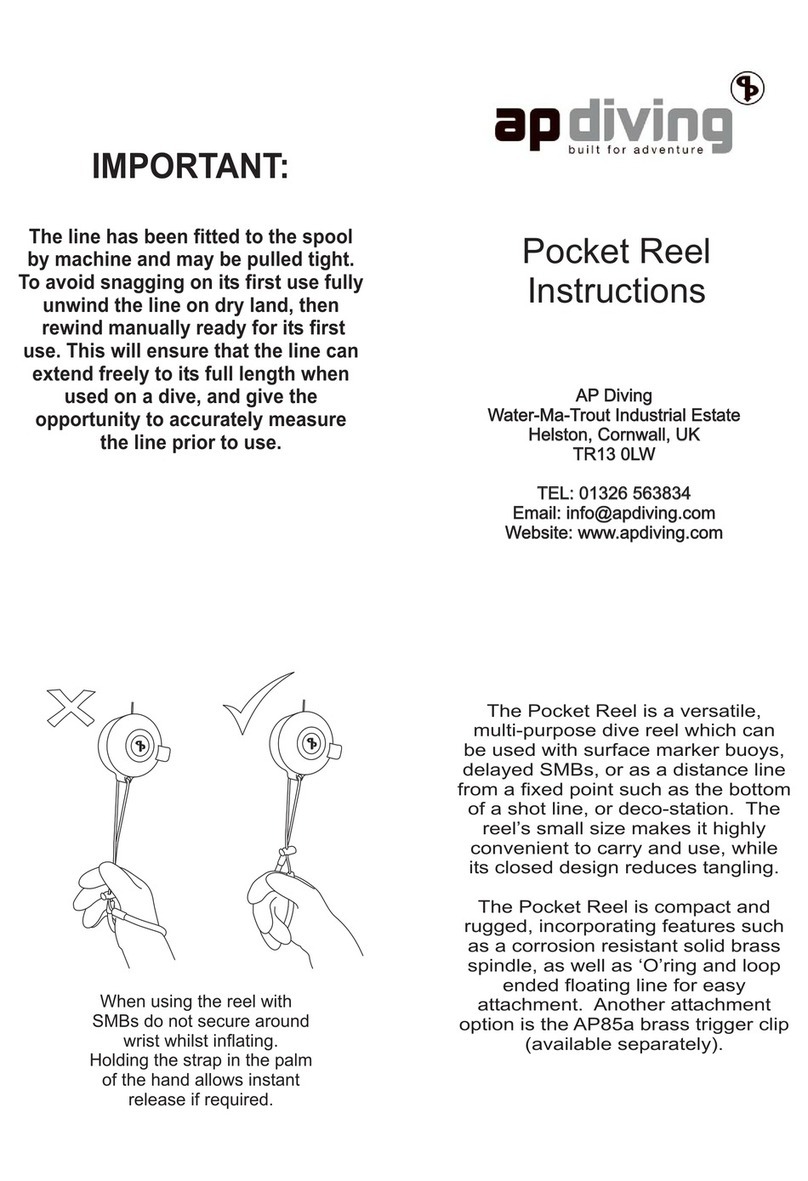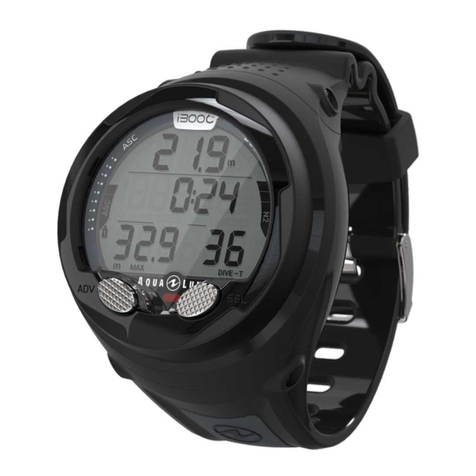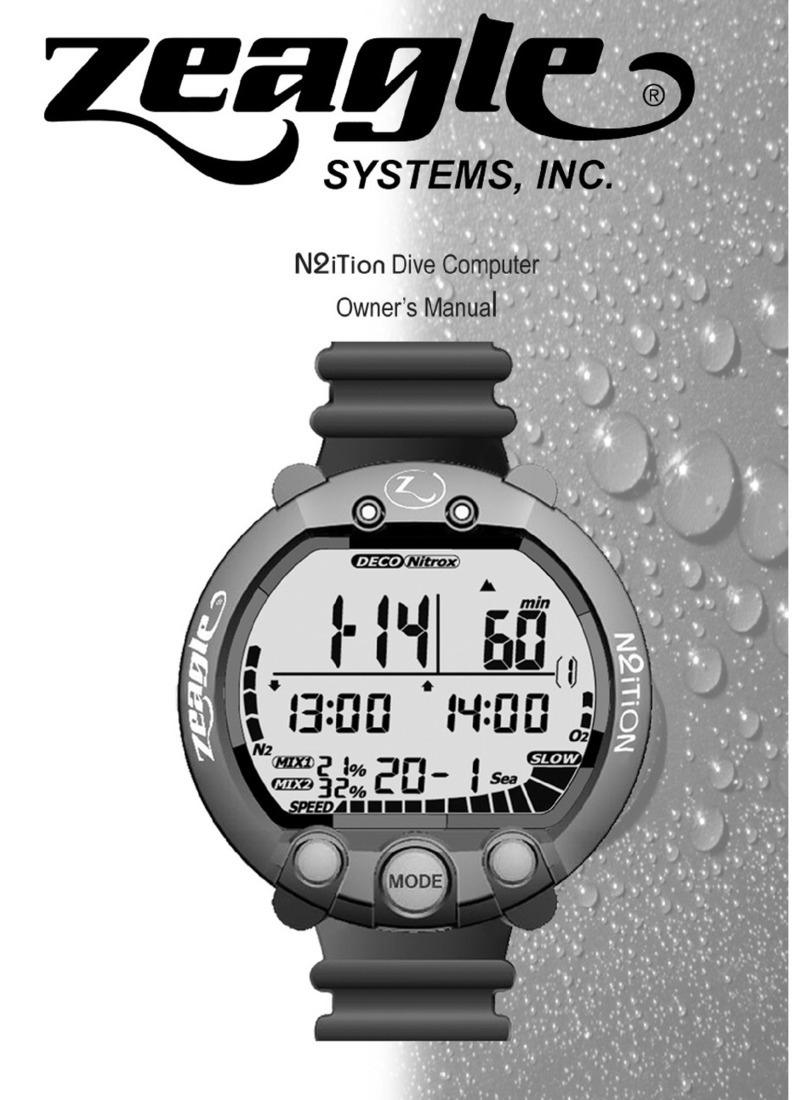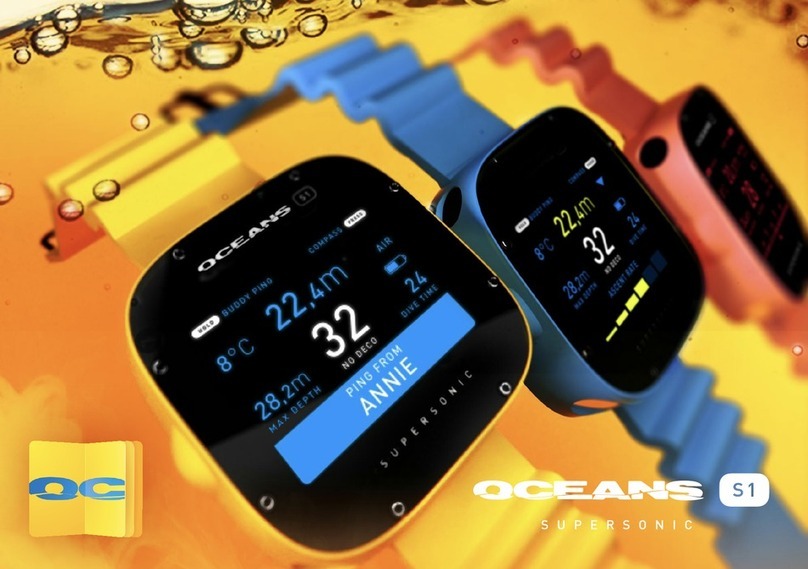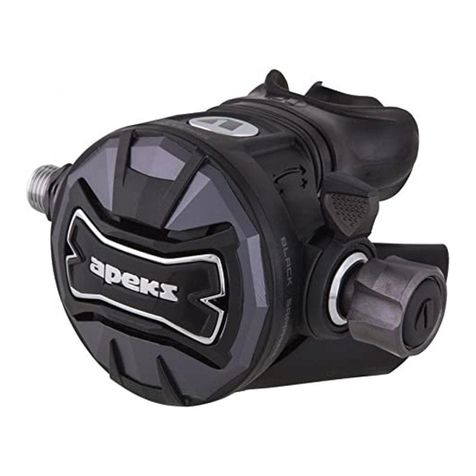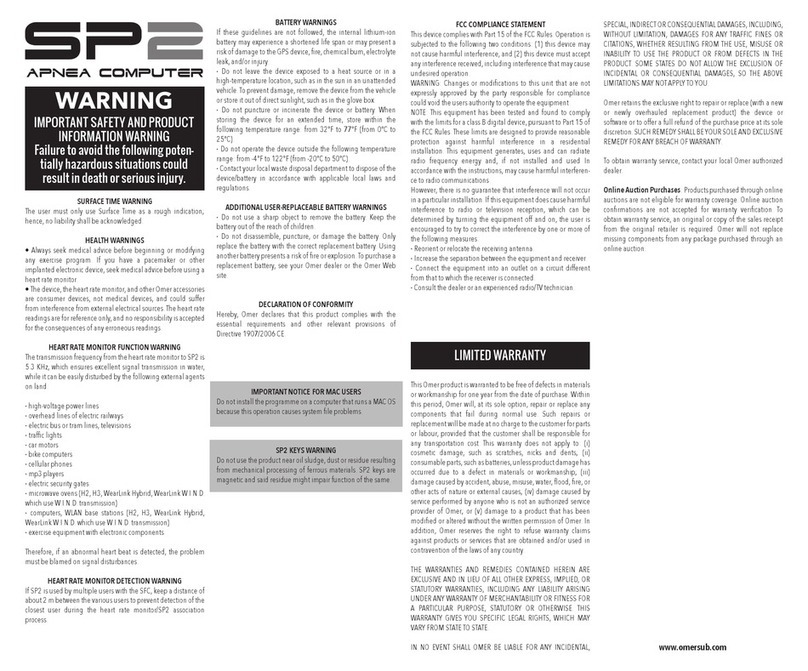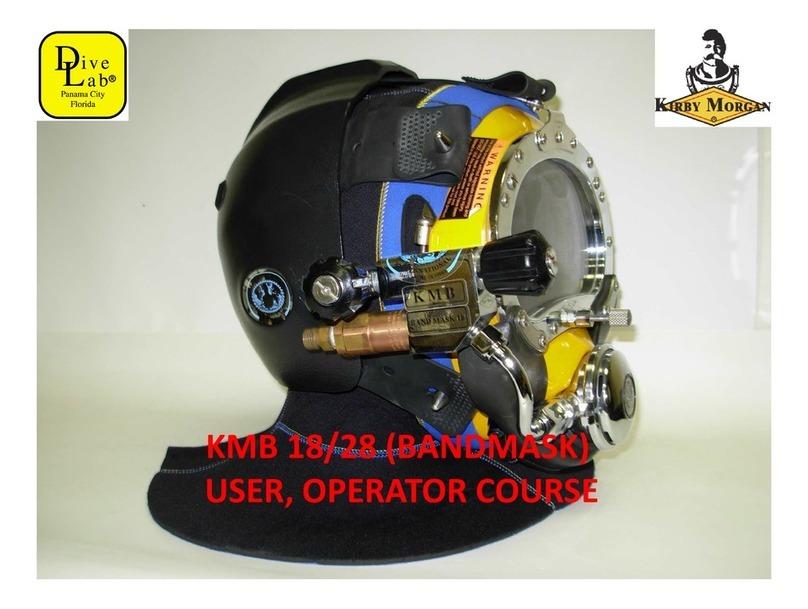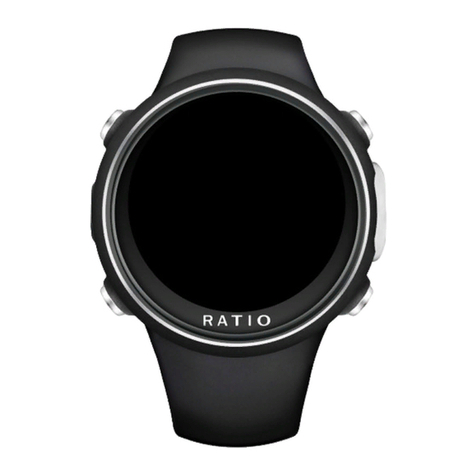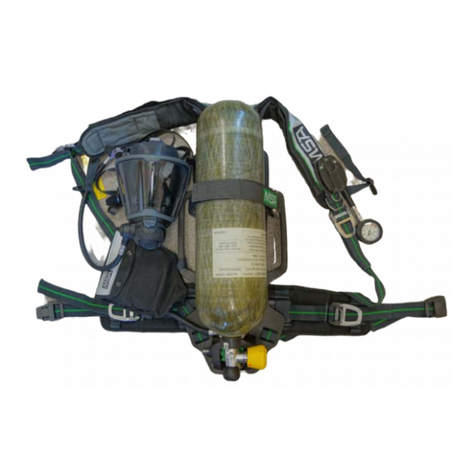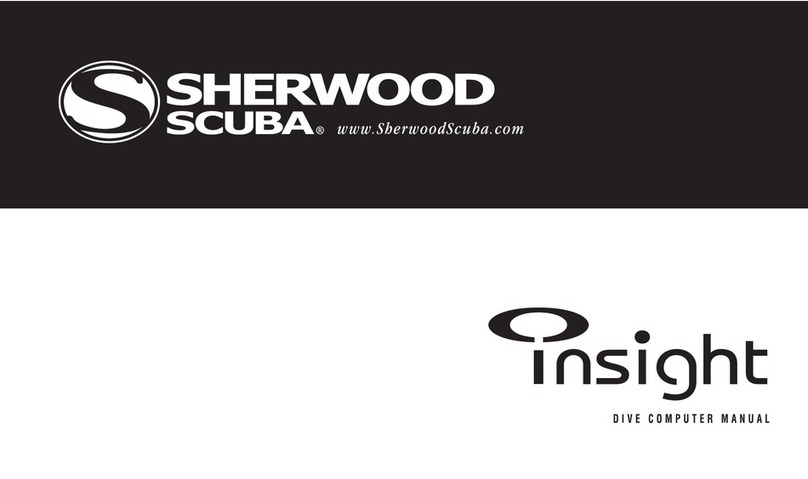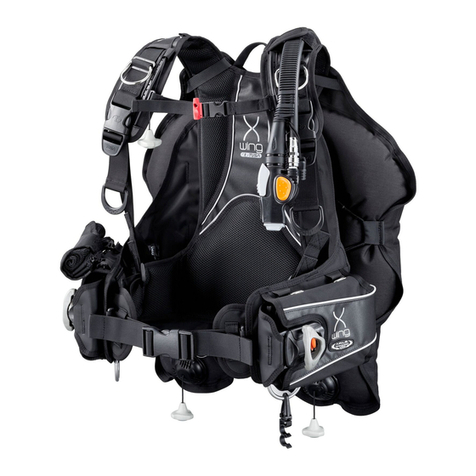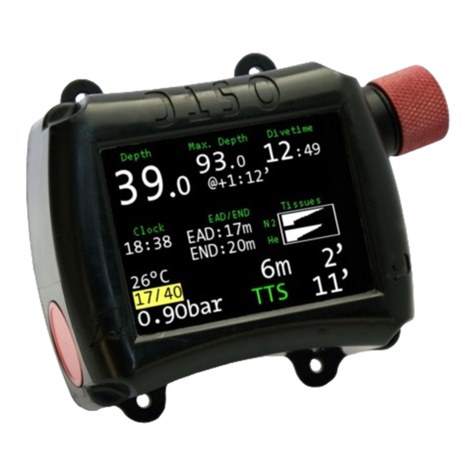4 |P a g e A P D i v i n g O p e n C i r c u i t B a i l o u t
General Precautions and Warnings
Before using this OCB mouthpiece, you must receive instruction and certification
in diving rebreathers from a recognised training agency. Use of this OCB by
uncertified or untrained persons is dangerous and can result in injury or death. It is
very easy to configure the OCB and/or use it in an unsafe manner. Even if specific
training is undertaken in its configuration and use, it is still possible to injure
yourself through carelessness.
The Inspiration XPD, EVP and EVO closed circuit rebreathers’ CE certification to
EN14143:2013 is unaffected by the addition of this OCB mouthpiece.
OCB maximum certified depths: Closed Circuit = 100m. Open Circuit = 50m.
This OCB mouthpiece meets the requirements of the Personal Protective
Equipment Directive 89/686/EEC –CE certification when fitted to a first stage
regulator conforming to EN250:2014 or EN13949:2003 and to an Ambient
Pressure Diving Ltd rebreather.
This OCB mouthpiece is not configured for buddy-breathing (multiple users).
Factory / Dealer prescribed service for this OCB mouthpiece is recommended at
least once annually by a factory trained Ambient Pressure Diving service
technician. Disassembly or repair must not be attempted by persons who are not
factory trained and authorised by Ambient Pressure Diving.
Warning! Training alone is not sufficient to ensure your safety. Correct
maintenance and diligent use of the equipment is essential. If sufficient
forethought has not been given to equipment configuration, risk analysis, dive and
emergency planning you could with one simple operation –changing from CC
mode to OC mode –feed yourself gas which will not support life. DO NOT
underestimate your capacity to make a mistake. Everyone makes mistakes, but
making a mistake with the OCB can prove fatal.
Warning! If additional components are used in the medium pressure gas supply,
for instance a gas connection system or gas switching block, it is important to
realise that these may interfere with the gas flow to the OCB and degrade the
breathing performance preventing the OCB from supplying sufficient gas to a hard
working diver at depth. Additionally, if they interrupt the gas supply the OCB may
be critically damaged on descents.
Warning! DIVING WITH HYPOXIC GASES
Know your maximum and minimum operating depths of the gas connected
Using Hypoxic Gases ON or NEAR the surface has and will KILL!!
Check and double check –don’t underestimate your capacity to make a mistake!
